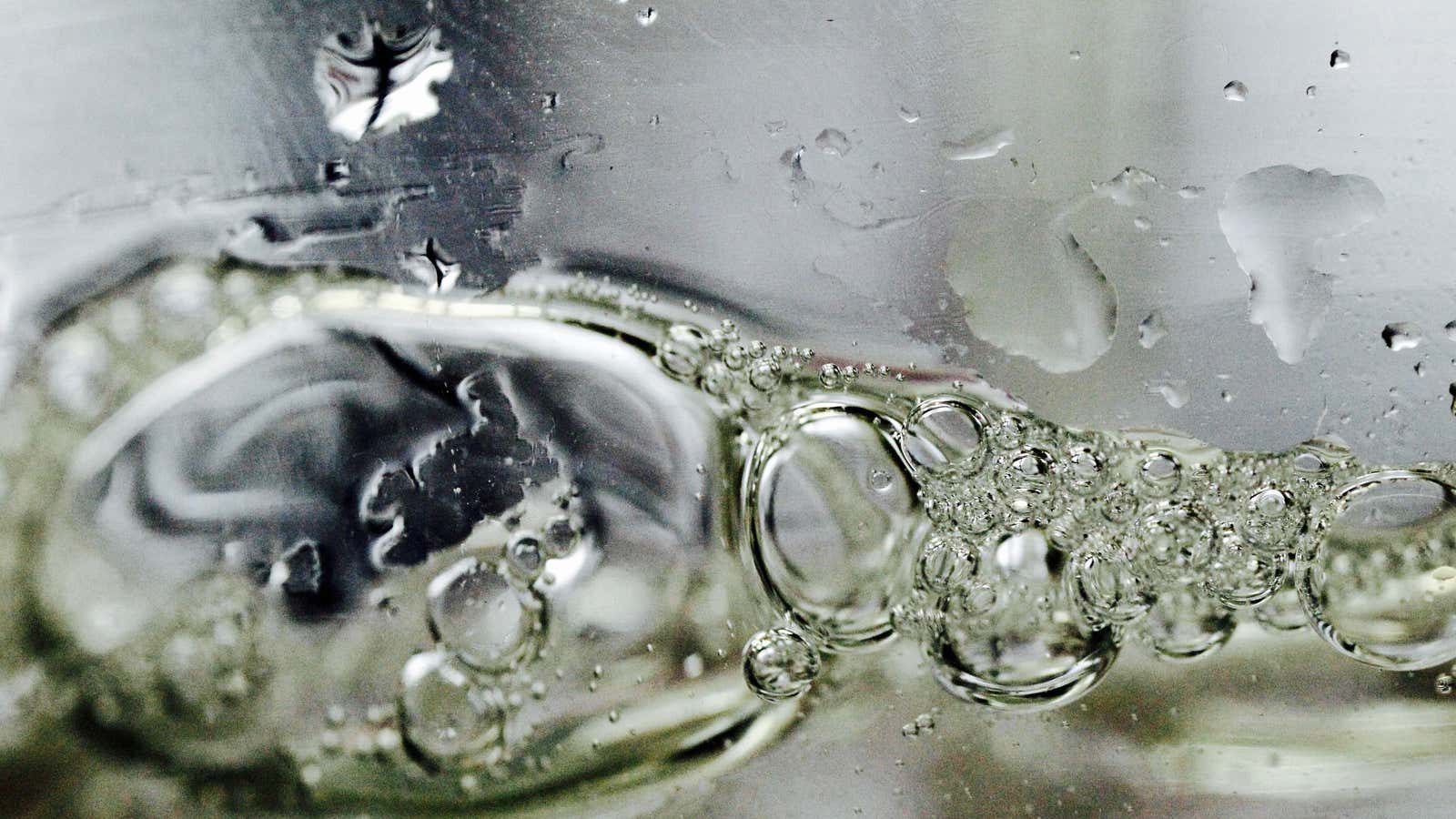Mammals need water to survive, so it makes sense that they may be designed with a special taste for H2O.
Though water doesn’t seem to taste like much, a study published in Nature on May 29 by neuroscientists at the California Institute of Technology shows that mammals respond to the stuff at a cellular level, on the tongue, just like they do to the five classic tastes: bitter, sweet, salty, sour, and pungent. Researcher Yuki Oka told Quartz that this finding “changes our concept of basic taste.”
Water may not be a taste all its own, however, warns the neuroscientist. On the one hand, this work seems to indicate that water is its own “taste” to the extent that specific taste receptor cells (TRCs) respond to the stuff. But technically speaking, those TRCs have already been connected to our ability to taste sour. ”So it’s not exactly a sixth taste, but modifying the concept of existing five basic tastes,” Oka explains.
For neuroscientists this is an important finding. The results illuminate a previously mysterious mechanism in mammals—external water detection—and make us more like vertebrates and insects than we may have imagined.
Researchers have studied thirst and neural circuits in mammals rather extensively, and scientists know that the brain is involved in thirst regulation. Yet the brain can’t be the only thing driving us to drink, because scientists have observed that mammals stop drinking before brain signals of satiation could possibly be sent. How or if water was detected externally by mammals and what physiological responses were involved in the process was totally unknown.
Now it seems that water detection is at least partly encoded by the mammalian taste system. Scientists suspected as much, based on prior vertebrate and insect taste system research. Still, to test the hypothesis that mammal taste receptors too are involved in the water detection process, the team from Caltech ran a set of tests on mice.
First, to determine whether mammal mouths respond to water on a cellular level, the researchers stimulated the tongues of mice with various solutions, finding strong nerve responses to deionized water among other basic tastants. This demonstrated that water effectively activates the taste system, just like salt or sugar or other substances that elicit gustatory excitement.
Next, to isolate which taste receptor cells respond to water, the researchers used special genetically modified mice without various TRCs. Acid-sensing cells associated with sour taste were activated by water, they found.
Mice were also offered the option of drinking water or a clear, tasteless, synthetic silicone oil that looks like it. Rodents lacking sour TRCs took longer to choose water than those with the acid-sensing receptors, suggesting the cells helped them to distinguish water from the oil and other liquids.
Oka points out that in mice, we can study taste on a cellular level and experience is observable, but we can’t exactly ask them about their perception of taste. More work must be done on primates and humans to figure out exactly how the brain and taste work together to get the water our bodies rely on to survive.
